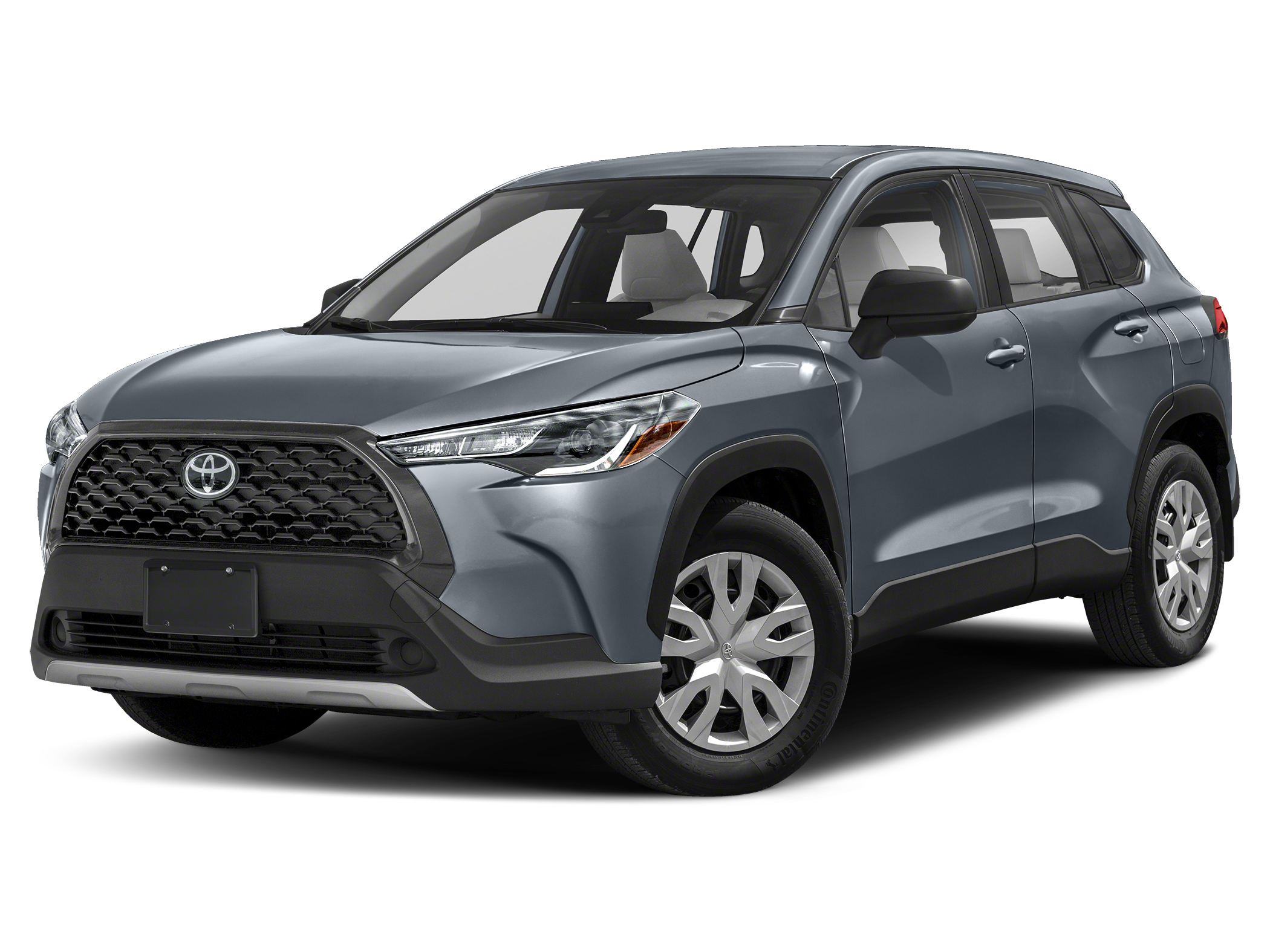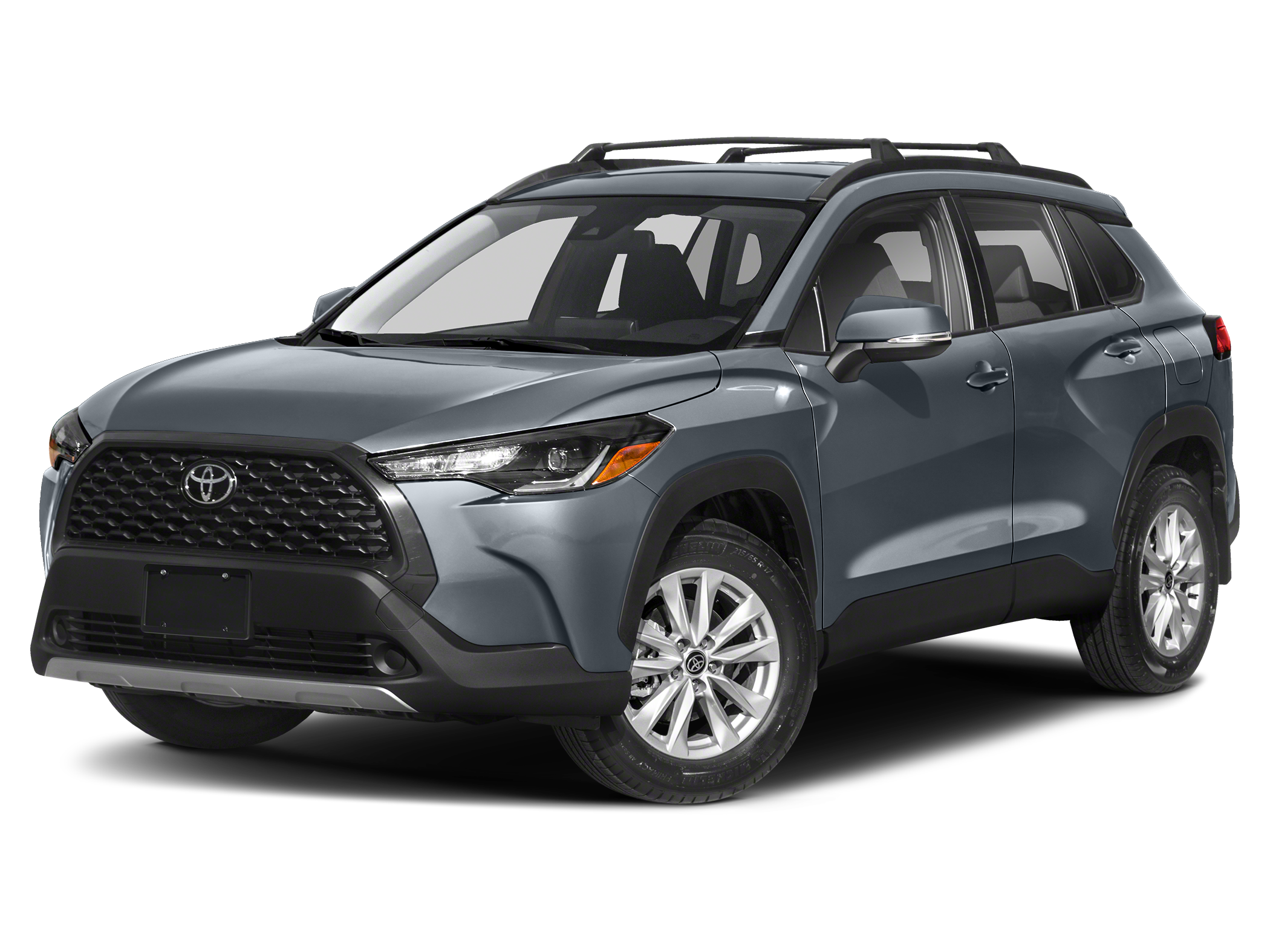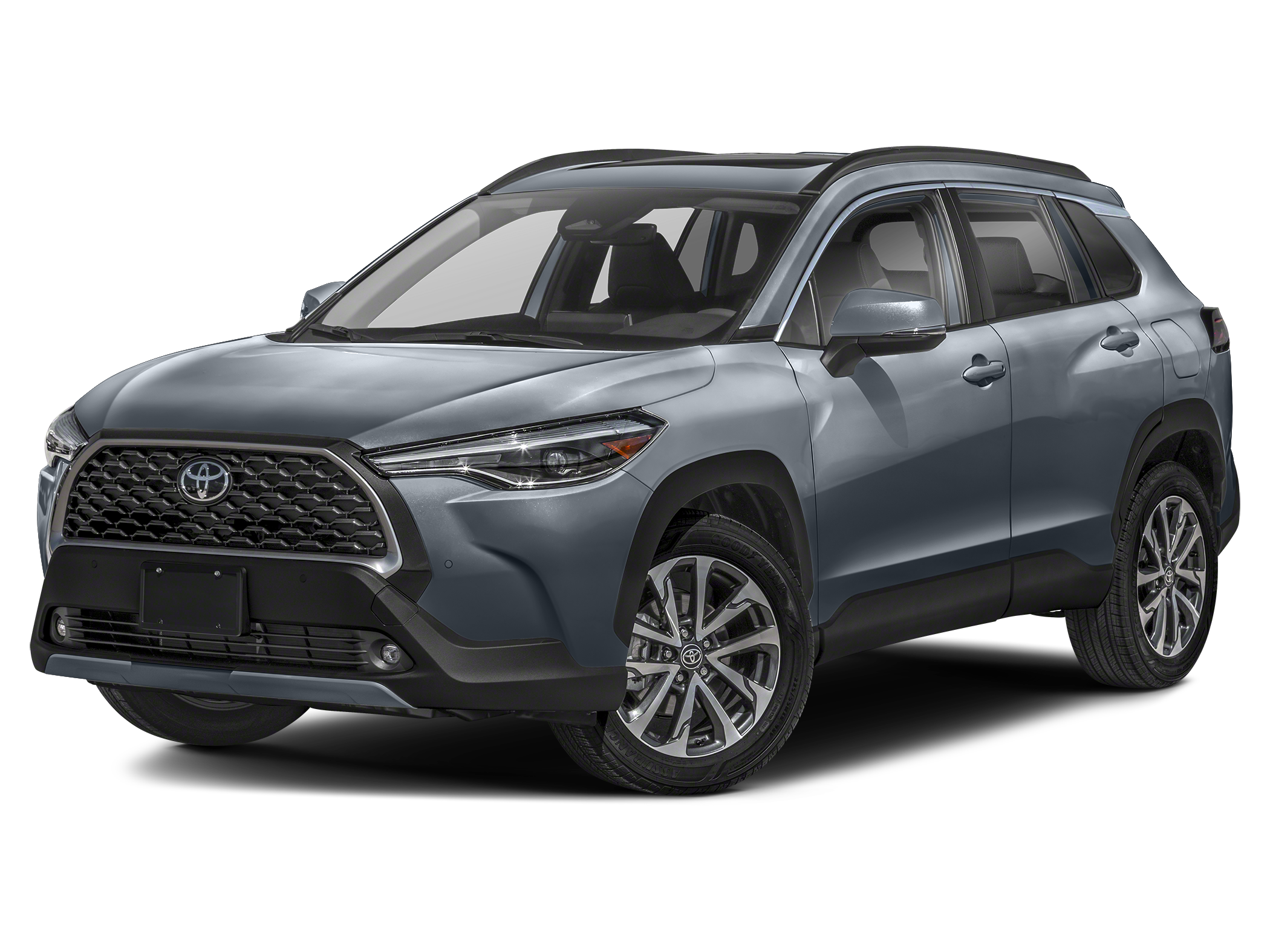REVIEWS AND RATINGS
What others are saying
REVIEW AND TEST DRIVE
2022 Toyota Corolla Cross Review
Toyota finally wades into the small SUV boxing ring with a competitive crossover.
Capital One
Toyota is uncharacteristically late to the small SUV segment with the Toyota Corolla Cross, which appeals to people seeking affordable, efficient, practical vehicles with rugged styling cues. Sure, they've been selling the Toyota C-HR for a few years now, but that's a lifestyle vehicle with a polarizing design, a cramped back seat, and little cargo space. Instead, what Toyota has needed is something like the new-for-2022 Corolla Cross.
According to Toyota, the Corolla nameplate is "synonymous with dependability, fuel efficiency, safety, and value." The automaker says the Corolla Cross extends those qualities to a small crossover SUV, and I agree. That's true. Unfortunately, the recipe doesn't include much in the way of driving enjoyment.
To summarize this vehicle, it's a Corolla station wagon with RAV4 styling cues. It sits on the same platform, uses the same powertrain as the Corolla sedan and hatchback, and has an identical dashboard and other interior components. Features like available all-wheel drive (AWD) make it more practical than the C-HR, and its comparatively conventional styling will appeal to a greater cross-section of potential customers. Plus, AWD is available, a feature missing from the C-HR.
For this 2022 Toyota Corolla Cross review, I test-drove an XLE AWD provided by the automaker in Southern California. It came with a Convenience Package, a Carpet Mat Package, a JBL premium sound system, and a frameless rearview mirror with a programmable Homelink garage door opener. These upgrades brought the Manufacturer's Suggested Retail Price (MSRP) to $32,229, including the $1,215 destination charge.
2022 Toyota Corolla Cross Review: The Design
If you shrank a Toyota RAV4, you'd have something that looks like the 2022 Corolla Cross. This approach is a smart move on Toyota's part. After all, the RAV4 is the best-selling vehicle in America that isn't a pickup truck, so creating a smaller and more affordable version makes sense. The result is appealing, too, especially with the XLE trim's 18-inch alloy wheels and the test vehicle's blue-gray Celestite paint color.
Open the driver's door, and you'll find the same dashboard, infotainment system, and center console as a Corolla sedan or hatch. The Corolla Cross sits higher off the ground, though, so it's easier to enter and exit. Overall, the materials are acceptable at less than $30,000, but the fuzzy headliner, plastic roof pillar covers, thin center armrest padding, and other cheap-looking and feeling details were not up to par in the loaded-up XLE test vehicle.
Watch your right knee when getting in because the dashboard edge juts out farther than it should. Once you're settled in, the XLE's 10-way power-adjustable driver's seat makes it easy to find a proper and supportive driving position. In addition, the available single (LE) or dual-zone (XLE) automatic climate control system helps to keep you comfortable. On cold days, the XLE's heated front seats are handy, but on warm days the SofTex simulated leather can trap sweat, leaving you damp and sticky for extended periods. The L and LE trims come with cloth seats.
Anybody who's been inside a modern Corolla will recognize the Corolla Cross's dashboard. Trapezoidal air vents anchor each end, the infotainment display sits proudly above the middle air vents, and the surrounding controls are in logical locations with clear markings.
Unfortunately, as is true of the Corolla, the Corolla Cross's center console design emphasizes style instead of practicality. Still, the LE and XLE get a useful wireless smartphone charging pad forward of the shifter.
Passengers will find adequate legroom in the back seat, but comfort is elusive due to a flat bottom cushion and an excessively reclined backrest angle. Air conditioning vents are standard, and that helps. But just as it is in front, the storage area is stingy, though the cupholders molded into the door panels are a nice touch.
A power rear liftgate is available for the Corolla Cross but is unnecessary on a vehicle this size. Cargo space behind the back seat measures 26.5 cu.-ft. with FWD and 25.2 cu.-ft. with AWD. If you remove the cargo cover, you can slide full-size suitcases into the cargo area on their sides. Toyota also provides storage space on either side of the elevated trunk load floor, and there are small compartments underneath the floor where you can stash smaller items.
Toyota declines to provide an official cargo space number with the rear seats folded down, but typically doing so will double the volume at a minimum. In this case, you can expect at least 50 to 55 cu.-ft. of maximum cargo space, if not more.
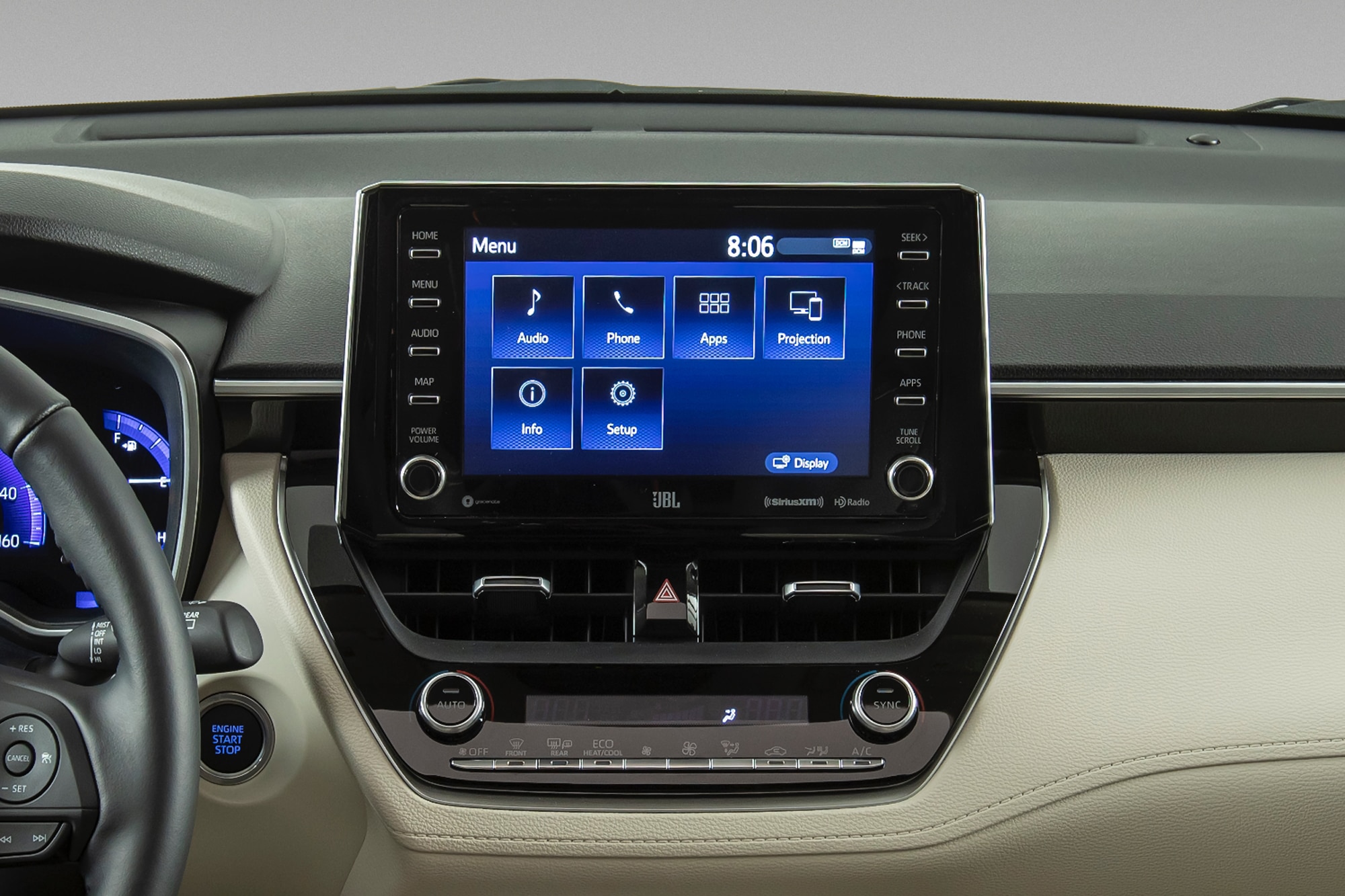 Toyota
Toyota
2022 Toyota Corolla Cross Review: The Technology
One nice thing about the Corolla Cross is that you get a comprehensive package of infotainment and safety technologies in the base trim level. Upgrading adds a few extras, but for the most part, you won't be left wanting when it comes to these features.
A 7-inch touchscreen infotainment system is standard with the Corolla Cross L trim level. In addition, it includes Bluetooth, Apple CarPlay, Android Auto, Amazon Alexa compatibility, SiriusXM satellite radio (with a free three-month trial subscription), and complimentary access for a limited time to connected services, including a Wi-Fi hotspot and safety features such as an emergency SOS system and automatic collision notification.
Upgrade to LE or XLE trim, and the SUV offers a standard 8-inch touchscreen and a wireless charging pad. In addition, you can option either trim level with extra connected services, including a remote engine starting system, car finding function, and more. A JBL premium sound system is also available with LE and XLE variants. Unfortunately, navigation is unavailable; Toyota assumes you will use your smartphone and Apple CarPlay or Android Auto for this functionality.
The infotainment system can take a few moments to load data and become functional after turning the vehicle on, so be patient. Otherwise, I have no complaints about the XLE's 8-inch setup. You get a power/volume knob and a tuning knob, and physical buttons on either side of the display provide fast access to main system menus. Connect a smartphone, and the voice recognition system plays nice with your device's native digital assistant to answer questions, get directions, and more. The test vehicle had the JBL sound system, but unfortunately, it delivered a somewhat muddy sound.
Switching now to advanced driving assistance systems (ADAS), every Corolla Cross comes with Toyota Safety Sense 2.0 (TSS 2.0). This collection of driver-assist features includes automatic high-beam headlights, forward-collision warning, pedestrian detection, automatic emergency braking, lane-departure warning, lane-keeping assistance, lane-centering assistance, and adaptive cruise control. To get blind-spot monitoring and a rear cross-traffic alert system, you must choose LE or XLE trim. In addition, the Corolla Cross XLE has front and rear parking sensors with automatic braking and adaptive headlights that help you see around dark corners at night.
In case you missed it, TSS 2.0 has adaptive cruise control and lane-centering assistance. Use them both simultaneously, and you've got a semi-autonomous driving assist system perfect for use on highways. Of course, you must keep your hands on the steering wheel, but the idea is that the technology takes on some of the responsibility of maintaining the desired speed while keeping the Corolla Cross in the middle of its lane.
During the evaluation, the ADAS proved accurate and trustworthy. However, the lane-keeping and lane-centering are not as subtle as I'd like and inconsistently exhibit uncertainty at freeway exits and on-ramps when the tech no longer detects a right-lane paint stripe. As a result, I preferred driving the SUV with these features turned off, but I think it's great that Toyota includes them on every Corolla Cross it builds.
The Insurance Institute for Highway Safety (IIHS) performed crash tests on the new Corolla Cross and named it a Top Safety Pick+. The SUV received high marks in all assessments, including for the performance of its base-trim headlights.
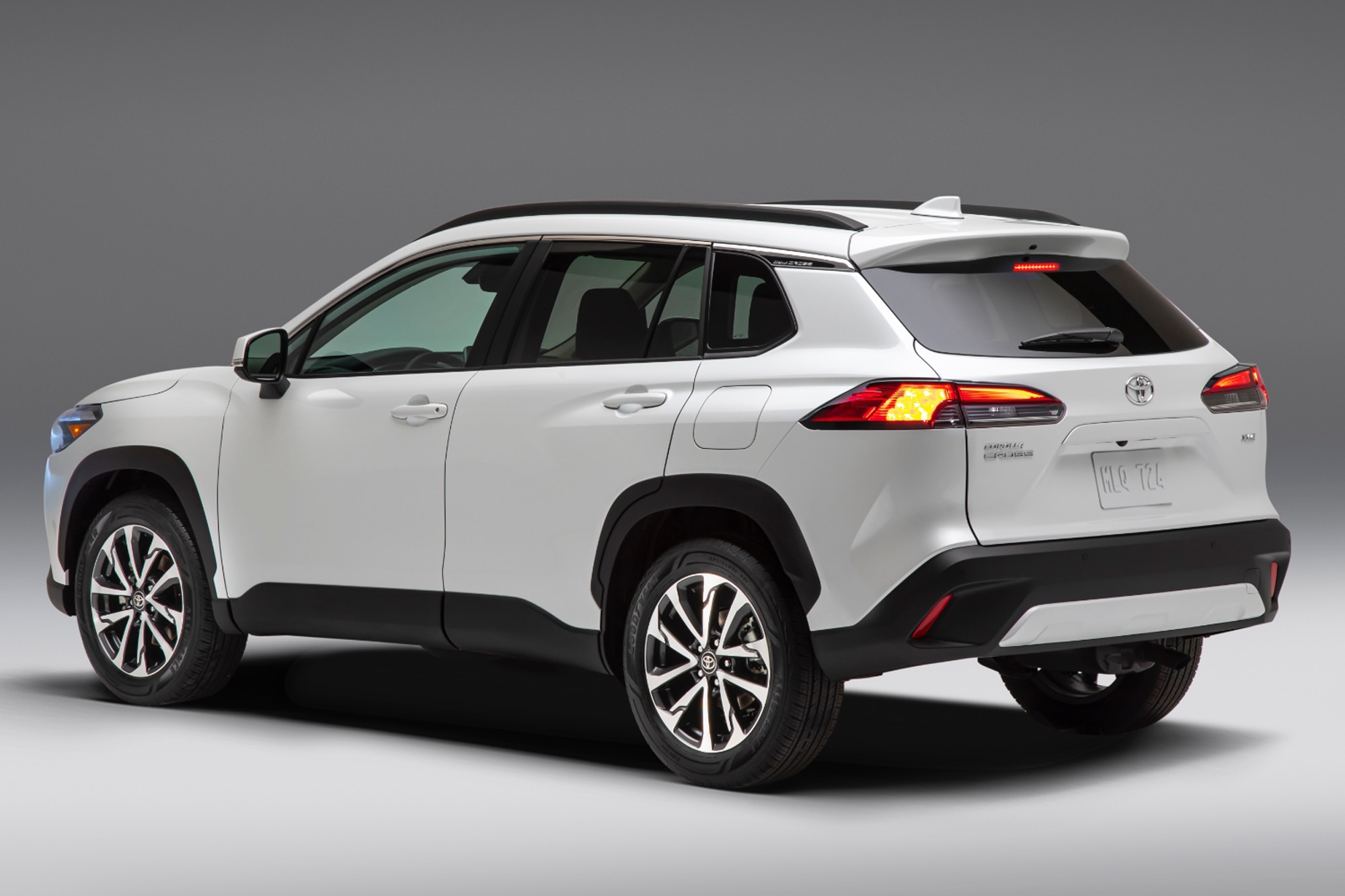 Toyota
Toyota
2022 Toyota Corolla Cross Review: The Drive
Toyota equips the Corolla Cross with the most powerful engine available in the sedan and hatchback. It's a 2.0L four-cylinder good for 169 hp and 151 lb.-ft. of torque, paired with a continuously variable transmission (CVT) and FWD or AWD. When you choose AWD, Toyota swaps out the standard torsion-beam rear axle suspension for a more sophisticated independent multi-link setup.
To eliminate the tendency of CVTs to feel sluggish off the line, the one in the Corolla Cross has a physical first gear to ensure a snappier response when you step on the accelerator pedal. It works as advertised, but the Corolla Cross AWD's extra weight—more than 200lbs. compared to a Corolla with the same engine and transmission—is evident.
It works fine when you're driving around town and asking little of the Corolla Cross's powertrain. But the moment you want some quick acceleration for merging onto a highway, passing slower traffic, or attempting to inject some fun into the journey, you get more noise than forward momentum. Speaking of noise, the Corolla Cross allowed plenty of it into the cabin on the evaluation loop. Road noise was especially problematic, encroaching on the interior from behind the front seats and suggesting that Toyota needs to add more sound deadening in the cargo area.
According to the EPA, the fuel economy rating for a Corolla Cross with AWD is 30 mpg in combined driving. However, the test vehicle averaged 28.8 mpg on the mountainous evaluation loop, including plenty of coaxing to extract power from the drivetrain.
Suspension tuning is on the soft side to ensure a more compliant ride, and sharper bumps shudder up through the suspension and vehicle architecture but not the steering column or seat structure. If you venture off the pavement or must commute home during a blizzard, the 8.1 inches of ground clearance is more generous than some of this SUV's rivals.
Surprisingly, the Corolla Cross delivers the most dynamism in the environment where you're least likely to drive the SUV. On a twisty road, the inherent strengths of its Toyota New Global Architecture (TNGA) reveal themselves in the form of athletic handling with good body motion and roll control. Undoubtedly, the XLE test vehicle's larger 18-inch aluminum wheels helped, as did the multi-link rear suspension design.
Unfortunately, the steering is awful. Numb and weighted too heavy, it communicates little to the driver and feels dull and slow in your hands. The brakes work fine, but I did not subject them to much duress.
While I had the Corolla Cross, I had to travel back and forth between Ventura County, California, and the San Diego area, so I got plenty of seat time in this new Toyota. Unfortunately, slogging north and south on Southern California freeways, both in traffic and at prevailing speeds during off-hours, the Corolla Cross was soul-sapping to drive. Considering that a Corolla XSE sedan or hatchback can occasionally put a smile on your face, the SUV's utter lack of driving enjoyment is disappointing.
That's a shame because, on paper, Corolla + SUV should = success. Most likely, Toyota will sell a bunch of them anyway. But if you want to enjoy your time behind the steering wheel, you might want to look at a Hyundai Kona turbo, Kia Seltos turbo, Mazda CX-30, or Volkswagen Taos. And if you need to go off-roading, the Ford Bronco Sport, Jeep Compass, and Subaru Crosstrek are better bets.
Alternatively, you can wait for the 2023 model year, when a Corolla Cross Hybrid debuts with 194hp, improved fuel economy, and, with any luck, a firmer suspension and enhanced steering.
Is the 2022 Toyota Corolla Cross a Good SUV?
The new Corolla Cross meets Toyota's objectives. It is most likely reliable, reasonably efficient, and safe, and if you can avoid spending money on options, there is real value here. However, it is more of an appliance than most modern Toyotas, especially when driven in the situations most people encounter most of the time.
Written by humans.
Edited by humans.
 Christian Wardlaw
Christian WardlawChris says his first word was "car." For as long as he can remember, he's been obsessed with them. The design. The engineering. The performance. And the purpose. He is a car enthusiast who loves to drive, but is most passionate about the cars, trucks, and SUVs that people actually buy. He began his career as the editor-in-chief of Edmunds.com in the 1990s, and for more than 30 years has created automotive content for CarGurus, J.D. Power, Kelley Blue Book, the New York Daily News, and others. Chris owns Speedy Daddy Media, has been contributing to Capital One Auto Navigator since 2019, and lives in California with his wife, kids, dog, and 2004 Mazdaspeed Miata.
